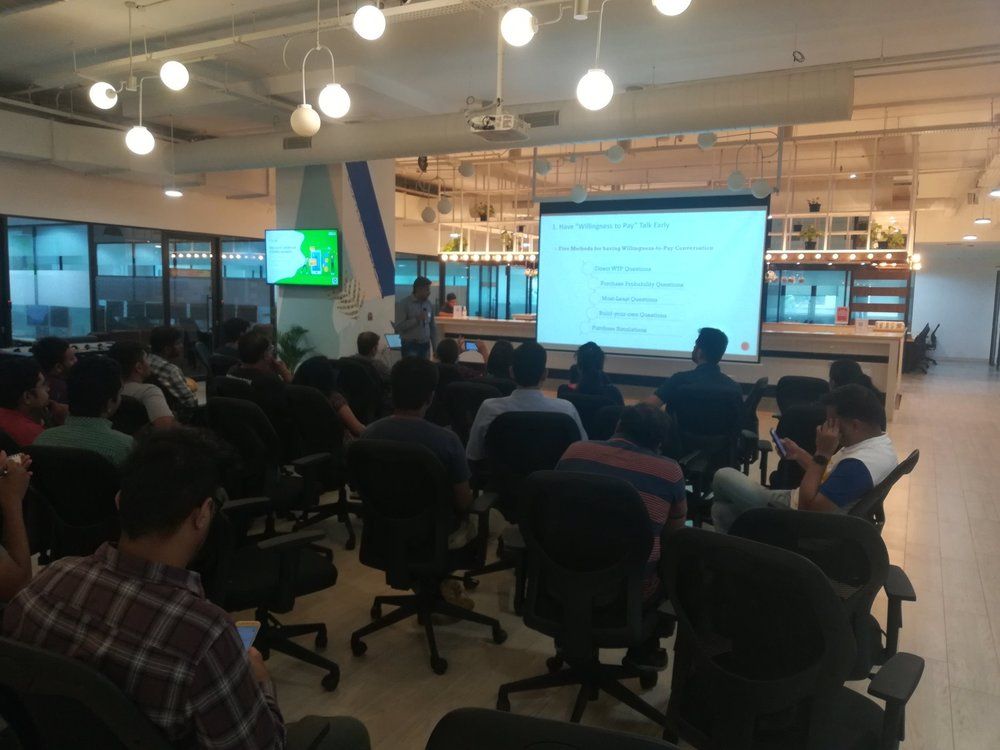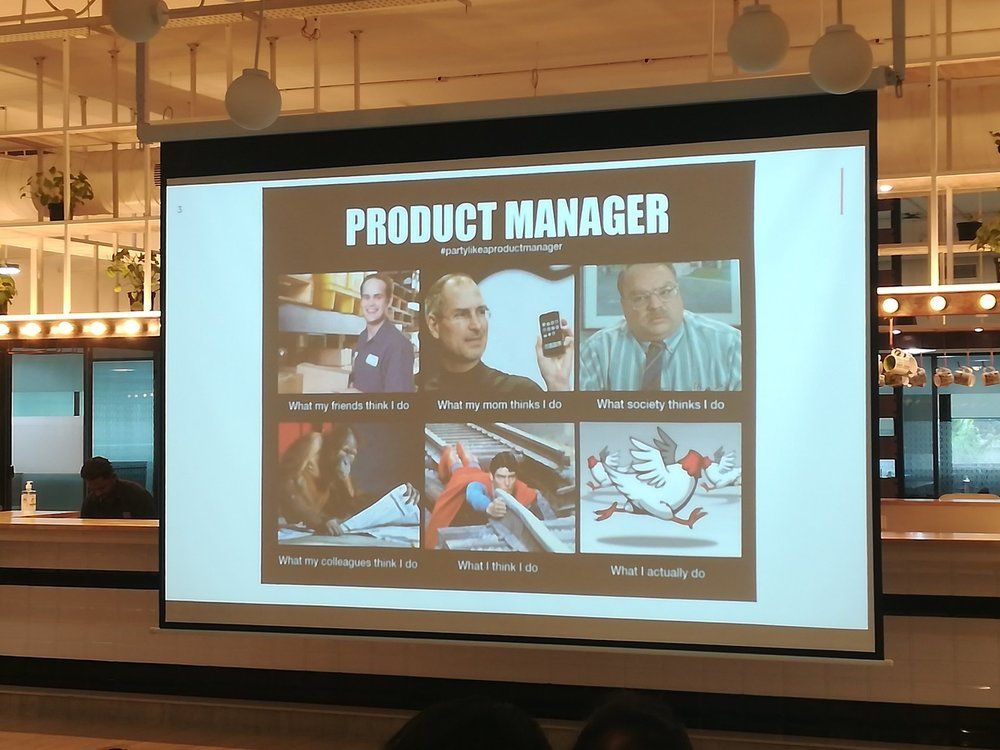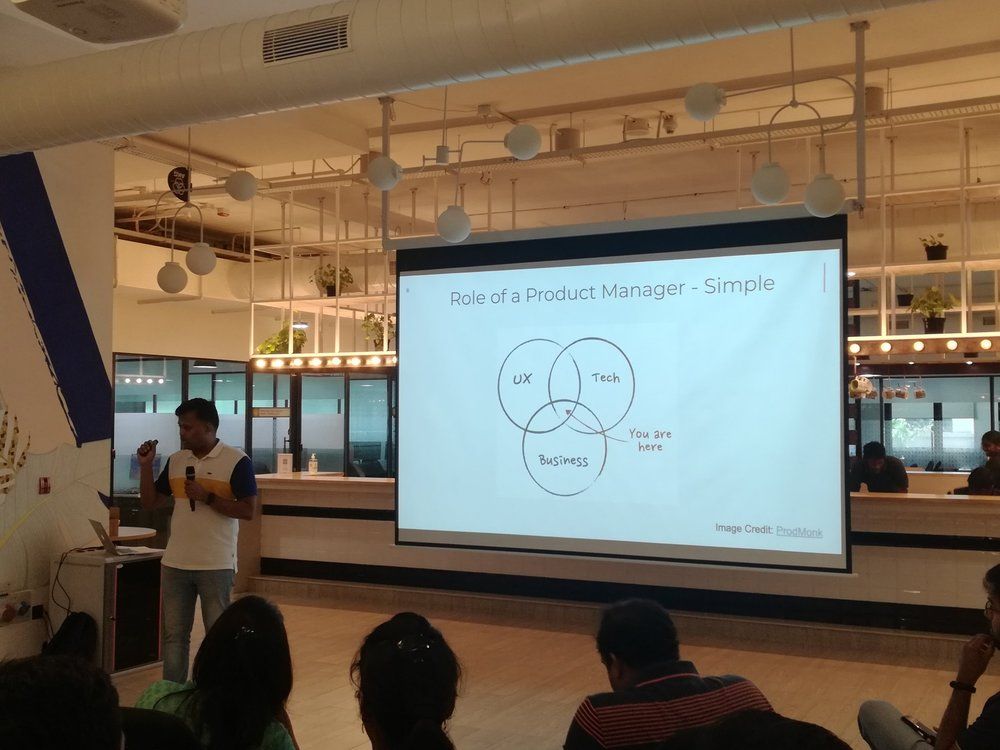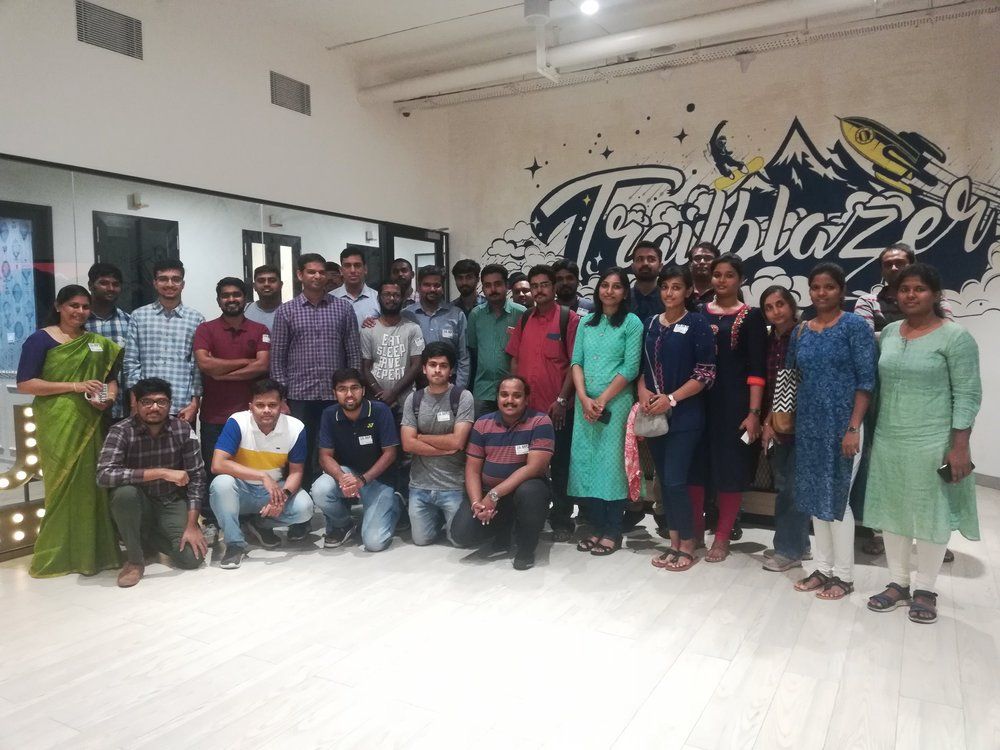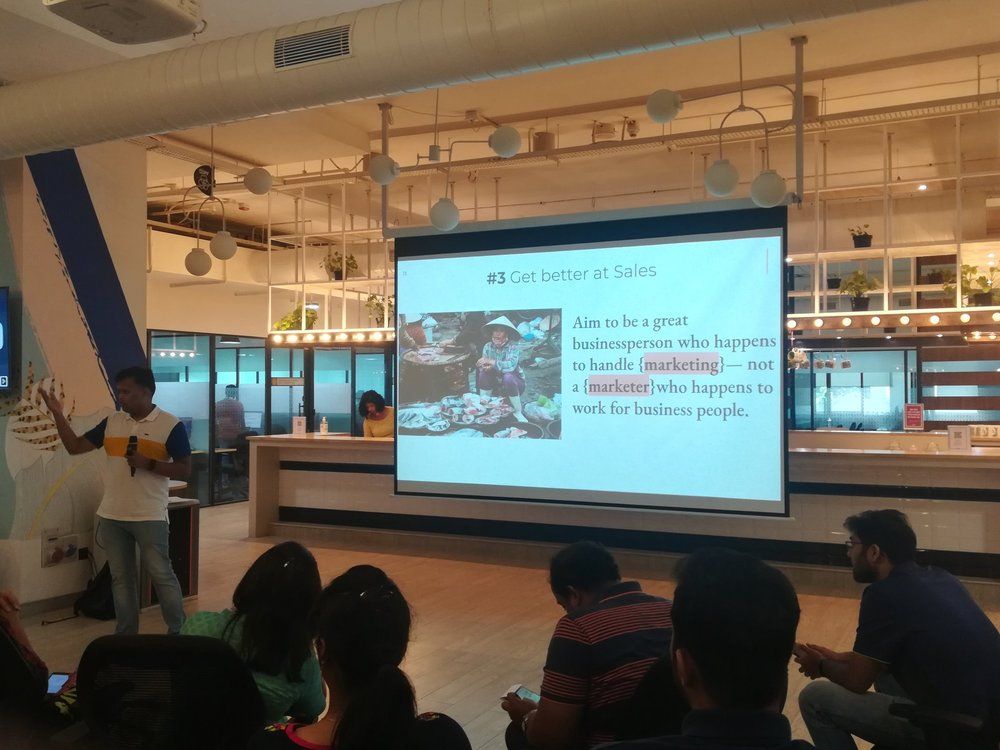One-Inch Square
I found this piece of advice on writing by Anne Lamott to be refreshing:
“A blank piece of paper is like an unassaulted ice floe — whether you’re a well-known writer or a beginner, it’s overwhelming. I teach a second-grade workshop with my grandson right now, and I tell them about keeping a one-inch picture frame on their desks — all you have to do on any given day is what you can see through that one-inch picture frame. I’ll say, ‘You don’t have to write a whole book on birds; just pick one bird.’ We have a lot of pelicans where I live, so I’ll say, ‘Read about pelicans, and then write me two sentences about pelicans in your own voice.’”
My impression is also the same: Writing can seem like a vast undertaking and many times demotivating. The resistance in you tells that this is not unique or this has been written much better by another writer and so on. I want to remember Anne’s advice in these times, “to look at things through a one inch square”.
We are all having unique perspectives. I am parent-manager-fitness-gadget enthusiast. My views are unique to my world like any other person. There are tons of people like me. But still they I am a unique snowflake because of my past experiences and my future pursuits.
A one-inch frame is a unique enough differentiator to look into the world. A one-inch frame may generate an original perspective that no one could possibly arrive at. A one-inch frame way of looking and writing your thoughts online is a great way to build a reputation. A one-inch frame based writings always have unique audience: family. A one-inch frame writing can help me to look back on how I have grown and how my views have evolved and transformed. If not for others, the one-inch frame method of writing is a good way capture my thoughts and pass it for my generations to come.
May be my great-great-grand-daughter wants to know how people in 21st century were so stupid to drive cars on their own and listening to music or random person talking in radio. Some of my one-inch square based writings will help her appreciate the nuances better.
Haider, Kashmir, Lion King
Kashmir is in the northernmost of India. It shares borders with Pakistan, China and has had a problematic past. (I am from the southernmost part of India, Tamil Nadu, as I said before, I know more about my neighbouring country Srilanka than Kashmir. But let me try to share my understanding of the problem and why it is in the news now.)
We in India have a strange thing that brings together. I don’t know what but we are a country that is 70+ years old in its existence. Before the British drew the borders and separated us as India, Pakistan and East Pakistan (Bangladesh), we were a group of different kingdoms and provinces. Long story short: When Kashmir was reluctant to join India, many political leaders of that time gave some special privileges to Kashmir and annexed it with India. But since then, Kashmir, the Swiss like the scenic state of our country, is in trouble with our neighbours like Pakistan and China.
The current Indian government led by Modi did a massive change to that privilege and passed a law in our parliament. A government which is faraway from Kashmir had decided the fate of the millions of Kashmiris. People are concerned about it because Kashmiris weren’t consulted for this decision.
Kashmir even though it is in India, for me, it has a lot of similarities with Sri Lanka. The Tamils in Sri Lanka faced enough oppression and discrimination by the Sinhala majority government. Many Tamils have “disappeared” from the records. We have heard the stories of white vans in Sri Lanka which sends shiver in the spine of Tamils in Sri Lanka. Kashmiris also face the same problems of disappearance because of the Indian Armed Forces.
Haider, a Bollywood movie, loosely based on Shakespeare’s Hamlet, tackles the political tinderbox of Kashmir. The film is set in Kashmir in the late ’90s. It shows the theme that is familiar in our public debates in TV and social media: ignorance about Kashmir in the pop-Indian psyche. The Indian mind works like this: Kashmir is part of India, but why do they have special privileges, Nehru is an asshole, why were the Kashmiri pandits kicked out of the valley.
We don’t realise the agency of Kashmir, the history behind the special privileges granted to them. It is the same Indian psyche that tried to impose Hindi as a national language and learnt its lesson from Tamilnadu. I digress, but the movie, Haider, showcases this beautifully.
Why does a doctor risk his life in helping a person labelled as a terrorist? How do love and lust push the boundary in a person to betray a sibling? There are many such nuanced and lofty conundrums posed by Shakespeare in his play, Hamlet. It is the genius of screenwriters Vishal Bhardwaj and Basharat Peer. Basharat is a journalist and has written books about Kashmir. The duo has imbibed the essence of Hamlet and brought it out in the Indian context.
By the way, why was I talking about Disney’s Lion King? Because Lion King is also a loose adaptation of Hamlet. Scar, the brother of Mufasa betrays and takes over the kingdom. Simba comes from a faraway land and defeats Scar and avenges for the death of Mufasa.
I always wonder how Shakespeare, even though his text is unreadable for my mind, had constructed such an excellent plot that gets every universal audience hooked in and interested till the end.
History Repeats Itself - Highlighter Edition
Marco Arment is a maverick developer. He was a CTO at Tumblr. He created a “Read It Later” service called Instapaper. It is a neat tool to save an online essay or blog. Instapaper will strip the unnecessary ads, recommendations and will simply store the text and the images. You can read whenever you are free, even offline without any Internet. It was a front runner up even before Safari introducing the nice, “Reading Mode”, in its browser. I was a huge fan of Instapaper. Instead of hoarding many articles in the browser tab, I just used to save it in Instapaper and read it later. At that time, there were a another bunch of tools like Pocket and others came. Many vanished, but Pocket is still around.
Something happened, Instapaper, was acquired by Pinterest. That should be a happy news. Because all the premium features of Instapaper was available for free. Sadly, no improvement happened in the product, even though they are with a behemoth like Pinterest. People were leaving Instapaper in troves and moved to Pocket.
Few years later something nice happened, Instapaper became independent of Pinterest. They didn’t fit in the grand scheme of things and align into the vision of Pinterest. They introduced a paid premium version to make themselves sustainable. I happily became a customer of theirs. I am glad to pay for Instapaper because it is a crucial tool in my workflow. I get a mild satisfaction that they may not run out of business, because there a lot of people like me who will be paying for Instapaper Premium.
Point here: If a tool is free and fully supported by ad-based revenue or subscription based revenue from its users, the tool may be surviving for a long time. Very rarely tools like Wikipedia survive with donor or patron based model.
The same thing is happening now with the highlighting applications. Highly is a simple and helpful tool to highlight the content you are reading online. I read a lot online, if any line or phrase is interesting or worth remembering, I just highlight. It gets synced with ReadWise and sent in a daily mail of randomly selected 10 topics. All was well so far.
But Twitter acquired Highly a few months ago. They shut down the iOS app. They made their premium version of their product as free for all. I am not sure when Twitter will shut them down. I really hope these guys at Highly finds a good business model to run their app.
Hope the history of Instapaper repeats for Highly too.
Some Thoughts on Substack
Substack was recently in news because they raised about $15M from a16z.
Substack helps writers to send newsletters/content to readers in a simple way and helps to monetise out it. Sending a newsletter is as simple as publishing a blog on Substack. They leverage the email channel to reach people but offer a way for writers to monetise this.
Once you publish your newsletter, it gets hosted in Substack like a blog. It can be easily discovered by any search engine. They also provide a discussion platform for that blog.
Chris Best, CEO of Substack says that: “Substack helps every writer to build their media empire”. Earlier, it was under the control of a few publishing giants and newspapers to do these things. Substack democratises it.
What makes me more hopeful about Substack is this: They are a true alternative to a local newspaper. I really want to know more about the news in my city or my district, I want to know what is cool, where to go and how are the people doing interesting this and so much. There are a few local newspapers in Chennai doing that but they fizzle out time again. They don’t have a sustainable business model with the ad-supported newspapers.
If there is a local beat reporter whom I really respect and like her work, I would be glad to subscribe and support for the content. Imagine that there a newsletter that you really look forward with content much more relevant to you. I would not hesitate to pay and support it.
I work for a SaaS business. I know the power of a subscription based business. Marc Andreessen famously quipped many years ago, “Software is eating the world”, but I believe now, “Subscription is eating software”. (I need to riff more on this in a separate post). But Substack is definitely a great business model for individual writers and content creators.
There was a comment from @haideralmosawi, which I thought was quite interesting and worth elaborating. I go on a long rant on this because I am a product manager in the Martech space, who spends a lot of time thinking about marketing automation and email marketing. IMO Substack is truly a Silicon Valley company innovating in a market which is huge, crowded, old and ripe-for-disruption.
Question from Haider: I recently launched an email course on productivity, and Substack was recommended to me as a channel to host the email course. But I didn’t see what advantages Substack would have over ConvertKit (or MailChimp). Is there something I’m missing?
Short answer: Usability & Bundling/Unbundling.
Long answer: MailChimp and ConvertKit are for a fairly different set of audience, who wants to send marketing communication or set up a drip-email campaign (like you are doing for your course) or just reach out to huge set of people to sell something. To monetise out of that you have to set up a different systems like Stripe or Gumroad. I think Substack solves this core problem. How do individual writers or bloggers, distribute and monetise from their content.
Jim Barksdale has a famous quip: “Bundling and Unbundling are the ways you do business”.
Substack bundles the newsletter, podcast, discussion forum and a blog in a single and simple platform. The usability is so good anyone who knows to compose an email in Gmail or post a blog can publish and make money with a newsletter on Substack.
Substack also has unbundled this entire product for a micro-segment of users from the heavy marketing automation platforms like HubSpot or ConvertKit. Yes, many marketers with sophisticated use case will find Substack limiting but they may not be the audience for this platform.
What Is It You Do to Train That Is Comparable to a Pianist Practising Scales?
This question was posed in Marginal Revolution, one of my favourites blogs. This question was inspired by the article from David Perell. The crux could be summed up by this argument:
Athletes train. Musicians train. Performers train. But knowledge workers don’t.
Knowledge workers should train like LeBron and implement strict “learning plans.” To be sure, intellectual life is different from basketball. Success is harder to measure, and the metrics for improvement aren’t quite as clear. Even then, there’s a lot to learn from the way top athletes train. They are clear in their objectives and deliberate in their pursuit of improvement.
Knowledge workers should imitate them.
This triggered a lot of discussion on Twitter. A Twitter friend Daniel posted his answer in this thread and Tyler Cowen answered in his blog post.
This post is my attempt at answering the same question. Here are my routines for being a better version of myself.
#1. Writing
I love to write. I use writing as a way to clarify my thinking and learn better. For the past 30 days, I have started my day by writing “morning pages” in 750words.com. My mood really feels better, and I feel private journaling is a great vent into the pressured self.
I also publish here at 200 Words a Day. It is a snowballing effort, which will have high dividends in the future. I am getting better at this craft of writing. I need to 10x my writing ambitions. I am a firm believer that in the age of abundance, inspiration is easily perishable. Everybody has a unique voice in themselves because of their diverse life experiences. So even if the thought or content may be cliched, it is worth jotting it out. I firmly believe writing is the new resume. You can peek into your brain and thinking process by consistently writing and publishing online.
I also write a lot of content for work. They are strategy documents, project overviews, product specification, customer interview summary and so on. I have slowly converted the people around me to this mode of working. I spend time researching and thinking. After that, I will jot down my thoughts and elaborate on it. Then, I ruthlessly prune it to make it as a 1-pager or a short document.
#2. Note-Taking and Highlighting
I maniacally take notes and highlight things whenever I read. I spend a lot of time in a day reading and mull over things. I mostly read online or on a Kindle. I make note-taking and highlighting to do this. To be present and read actively. Highlighting always keeps me on alert mode in reading. I highlight things that stand out for me. Inspiration is perishable simultaneously; we all have multitudes in ourselves. When I am inspired by a topic and read, my quality of attention is very high. The things that stand out to me will never stand out for the lazy me in the future. Highlighting and note-taking are my means to enable retention and recall.
I get an email from ReadWise daily with 15 highlights of my reading materials. It is randomly generated. I ensure I read it in the first half of the day when I am fully active. I truly believe in the concept of spaced repetition. ReadWise is one way to resurface the learnings I have done in the past. My past self has invested quality time and attention to a text. My future self needs to recollect and move on. That content might be helpful for me in the future. But just reading my old notes and highlights is important to me.
Demystifying Product Management
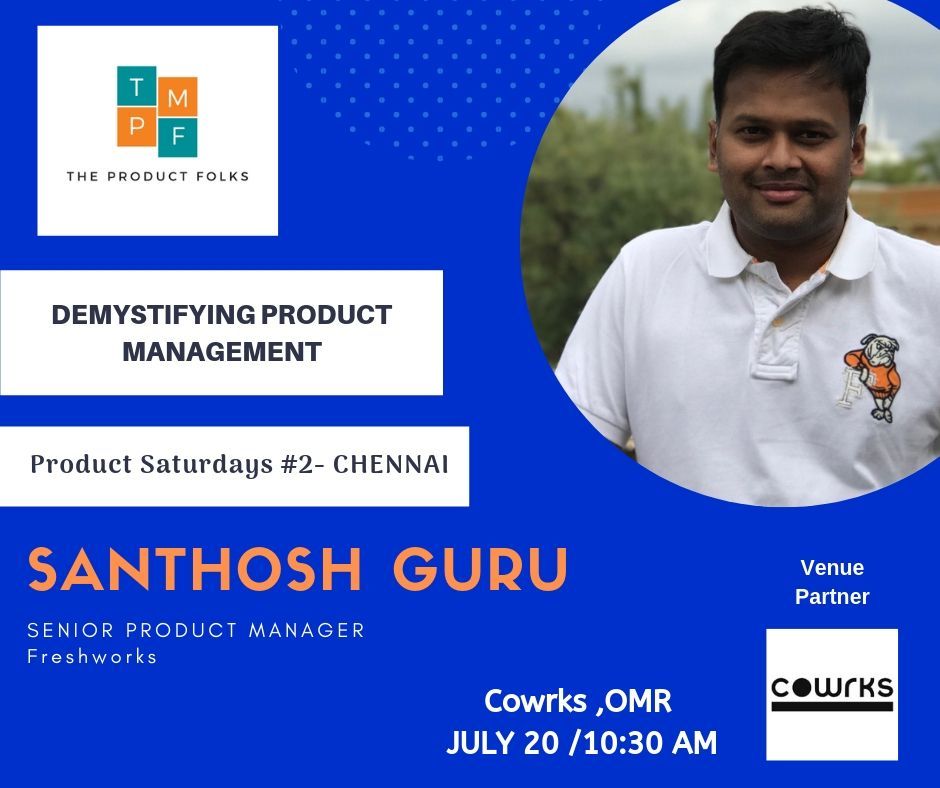
I gave a talk yesterday to an audience interested in Product Management. This post is a quick summary of the talk and some highlights.
It was organised by The Product Folks community. The audience was a mixed bag. Only some were developers interested in shifting to product management; few were working with PMs and wanted to know more about them. Only a handful were practising product managers. My talk was aimed at the general audience. I wanted to break some myths about being a PM. I also shared a few learnings that helped me in the past few years.
Myths
People think Product Managers are mini-CEOs of a product. The first lesson I learned as a PM was to influence people without authority. PMs usually have no one reporting to them. I have written a detailed post on why this is a wrong approach to the job.
PMs should have a technical degree. No, a PM need not have an engineering degree. But a PM should have tons loads of curiosity. A PM should be able to explain a product’s underlying architecture and building blocks. No need to know the details to debug a problem. (Kudos if you can do it, but it is not mandatory). A curious PM should know why a customer is buying the product. How is the marketing team positioning and selling? How are sales folks pitching? What are the critical problems the support team is facing?
Project Management is not Product Management. I know this is basic, but Chennai’s tech scene has mixed this up. Many job descriptions on LinkedIn and other portals clearly say, but it is completely misunderstood. Sometimes, I emphasise, only sometimes a Product Manager might be doing a bit of Program Management or Scrum Mastering role. But a Project Manager is a different role; their focus, skills, and organisational structure are meant to address a different challenge.
Lessons
(Note: I think these lessons are needed for anyone to thrive in their career. Be it an enterprise company or a startup. Be it a marketer or an engineer or a salesperson. But again, take it with a pinch of salt because this is my life’s experience. YMMV)
Understand the power of incentives - Knowing what motivates your peers or stakeholders is a must-have skill. You can articulate, persuade, and negotiate better when you know the incentive of the other person. Not every time, incentives are monetary. It changes based on the situation. A canny and shrewd PM always smells this and plays their cards accordingly.
Always Be Shipping - You need not write code and commit in Github to ship. Publishing frequently, getting feedback, and validating/invalidating our assumption is the core of shipping. We quickly build castles in our heads, which can collapse if our assumptions and world views are wrong. If you are the world’s most excellent expert on a topic, you don’t have to worry about this. But for many of us, it is vital. Writing a rough version of a spec document or sketching a UI mock and getting feedback from a customer or a stakeholder as quickly as possible is essential.
Get Better at Sales - Everybody sells every day. An engineer sells a technique for solving a problem to her manager or peers. A human resources executive has to sell the job well to a potential candidate. The brute force sales mechanism rarely works but has its own repercussions. You can enforce from the top; you might burn bridges with people in the middle. Enough literature is available on becoming better at these skills. But a piece of critical advice that helped me was: “Aim to be a great business person who handles XYZ, rather than an XYZ who works for business people.”. XYZ could be a PM, marketer, or test engineer.
Paying It Forward
I am an accidental product manager. I got a lucky break in my job at SAP Labs to be a technical product manager. One thing led to another: I now work as a Growth Product Manager at one of the most excellent startups in India, Freshworks. I was fortunate and lucky to be in the right place at the right time. I was fortunate because I had managers/peers who believed in me, supported me and pushed me out of my comfort zone. I was lucky to be in the company of friends and family interested in startups and were a bedrock of support.
I burnt my fingers in this wildly exciting journey of startups. I have been foolish in trusting the labels and have made many mistakes, which sounds stupid in retrospect. But I have been blessed to work with remarkable human beings and have made some great lifelong friends. Emotionally, it is a roller coaster ride. I wished I had someone to mentor unofficially, with whom I could bounce opinions and validate/invalidate my worldviews. I was lucky to find some of them on Twitter and other online communities. But it definitely could have been earlier.
Inspired by people like these on Twitter, I want to do the same for folks in my network. If you or anyone you know needs help to think through career decisions, get feedback on a resume, comp negotiations, or suggestions about product management career/skills, I can help them. My Twitter DMs are open, and they can email me at santhoshguru AT gmail DOT com
I’ve been fortunate to have a great group of smart and knowledgeable friends. They have helped me think through major professional life decisions. It has made an enormous difference in my life. I am just doing what people have done for me and my career.
